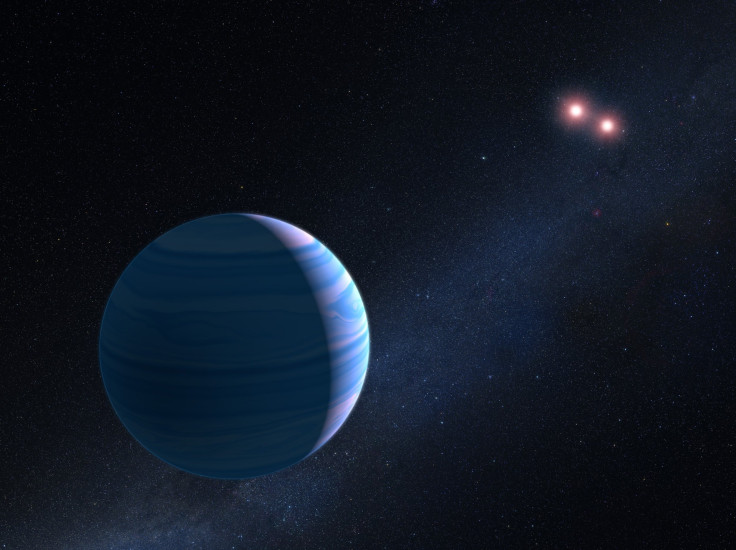Hubble Uses Gravitational Lensing To Confirm Existence Of Distant Planet Orbiting Two Stars

Gravity, as Einstein’s theory of general relativity tells us, warps space-time. Occasionally, when the stars are aligned a certain way, this warping of the fabric of the universe results in a phenomenon known as “gravitational lensing,” wherein the strong gravitational field of a foreground object acts as a lens that “bends” light and allows scientists to catch a glimpse of what might otherwise have remained invisible.
Now, a team of astronomers have used the technique to confirm the existence of a distant planet orbiting two red dwarf stars — the first time a three-body system has been confirmed with the use of a gravitational lens.
The planet in this system orbits the two stars — both red dwarfs fainter and less massive than the sun — at a distance of roughly 300 million miles, completing an orbit every seven years.
The circumbinary exoplanet is located in the system OGLE-2007-BLG-349 at a distance of roughly 8,000 light-years from Earth. When it was first discovered by an international collaboration of researchers in 2007, they detected only one star and a planet, but a detailed analysis also revealed a third body that astronomers could not definitively identify at the time.
“The ground-based observations suggested two possible scenarios for the three-body system: a Saturn-mass planet orbiting a close binary star pair or a Saturn-mass and an Earth-mass planet orbiting a single star,” David Bennett from the NASA Goddard Space Flight Center in Greenbelt, Maryland, said in a statement.
Using the Hubble space telescope, the researchers were then able to detect a background star momentarily aligned with OGLE-2007-BLG-349. This revealed that the starlight from the foreground lens system was too faint to be a main sequence star, but it had the brightness expected for two closely orbiting red dwarf stars.
“We were helped in the analysis by the almost perfect alignment of the foreground binary stars with the background star, which greatly magnified the light and allowed us to see the signal of the two stars,” Bennett said.
© Copyright IBTimes 2024. All rights reserved.





















